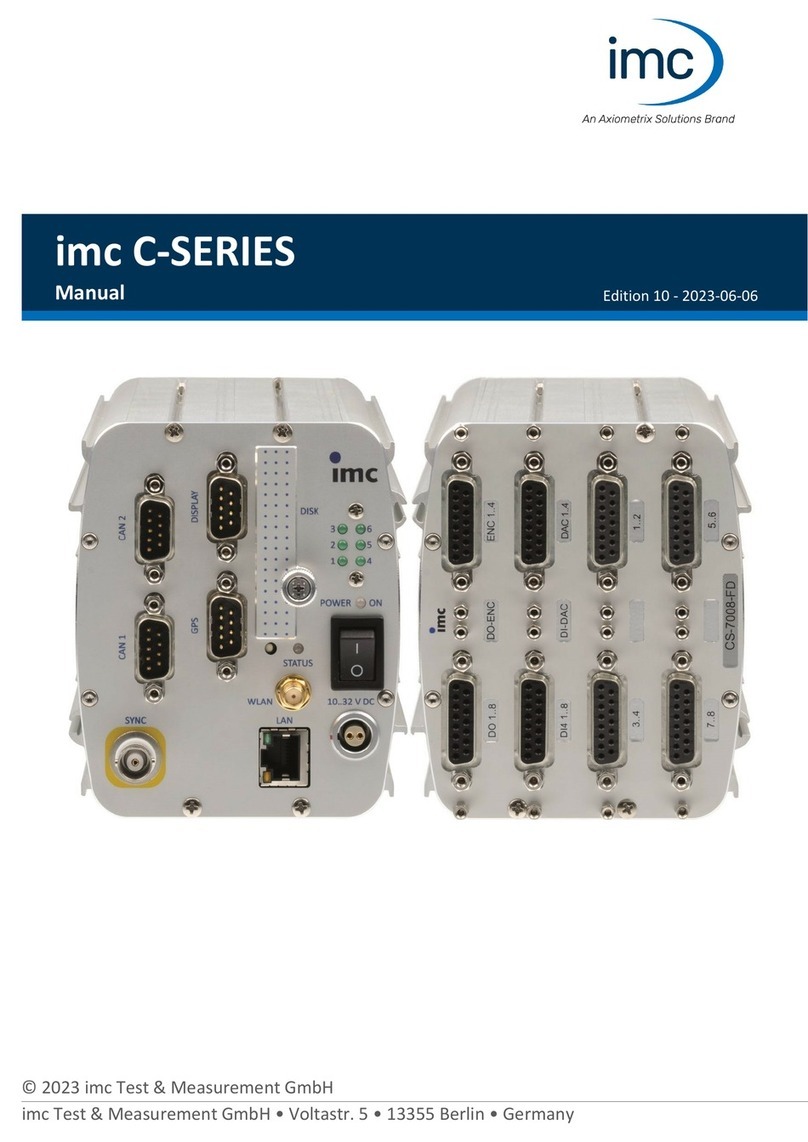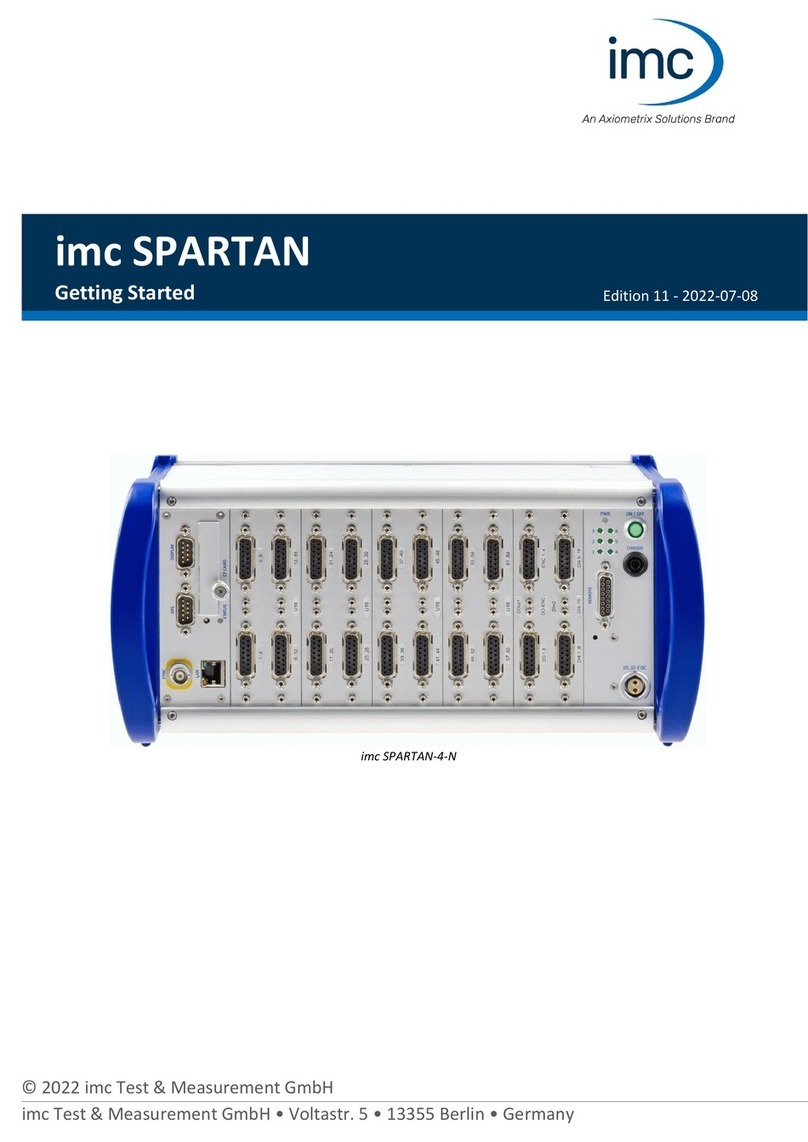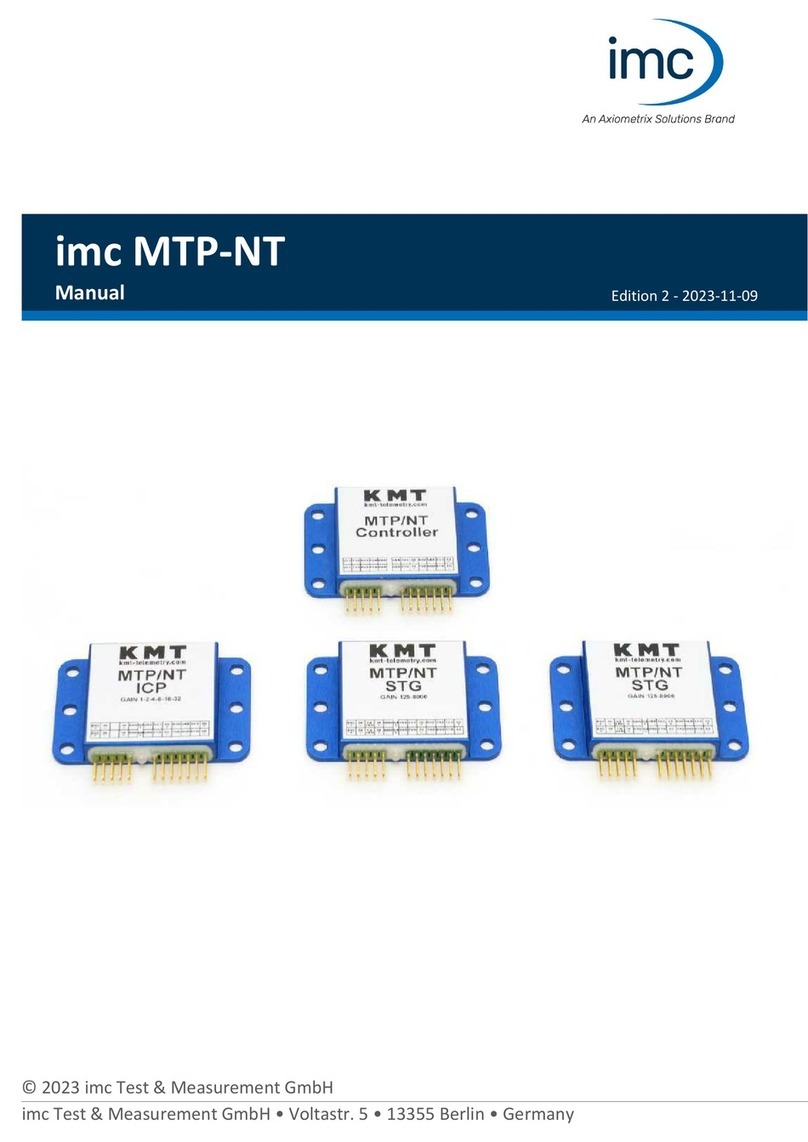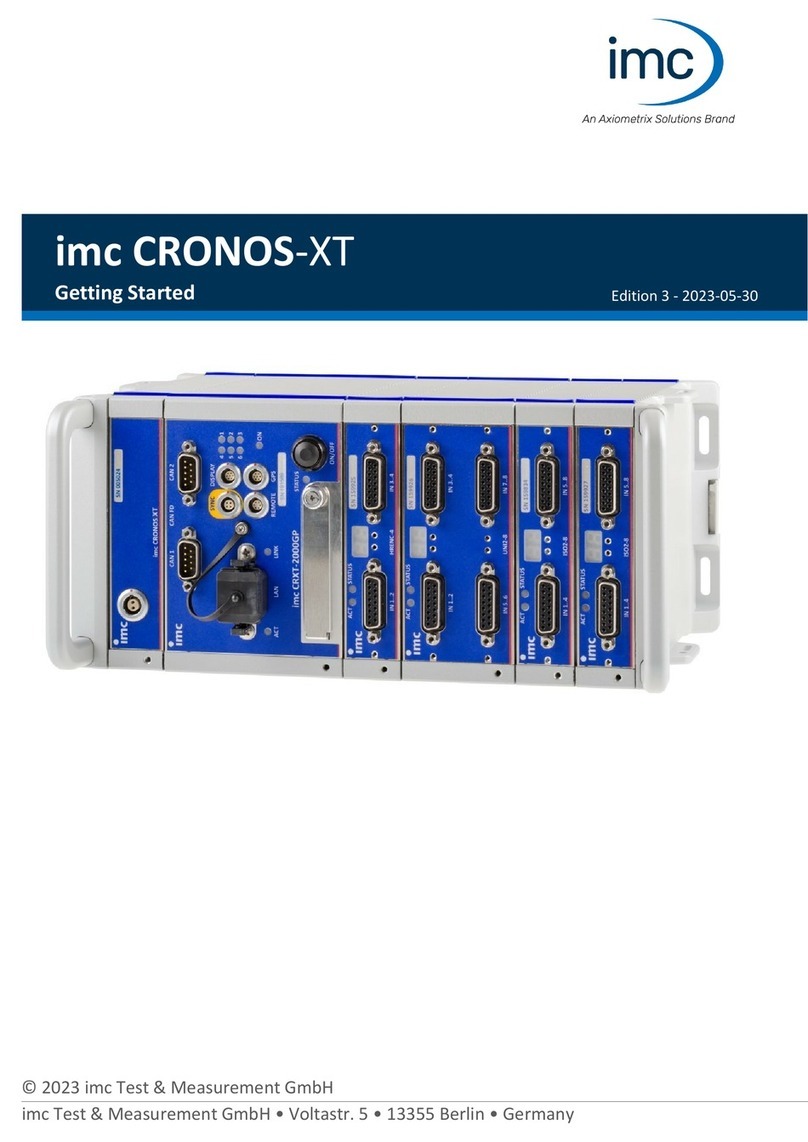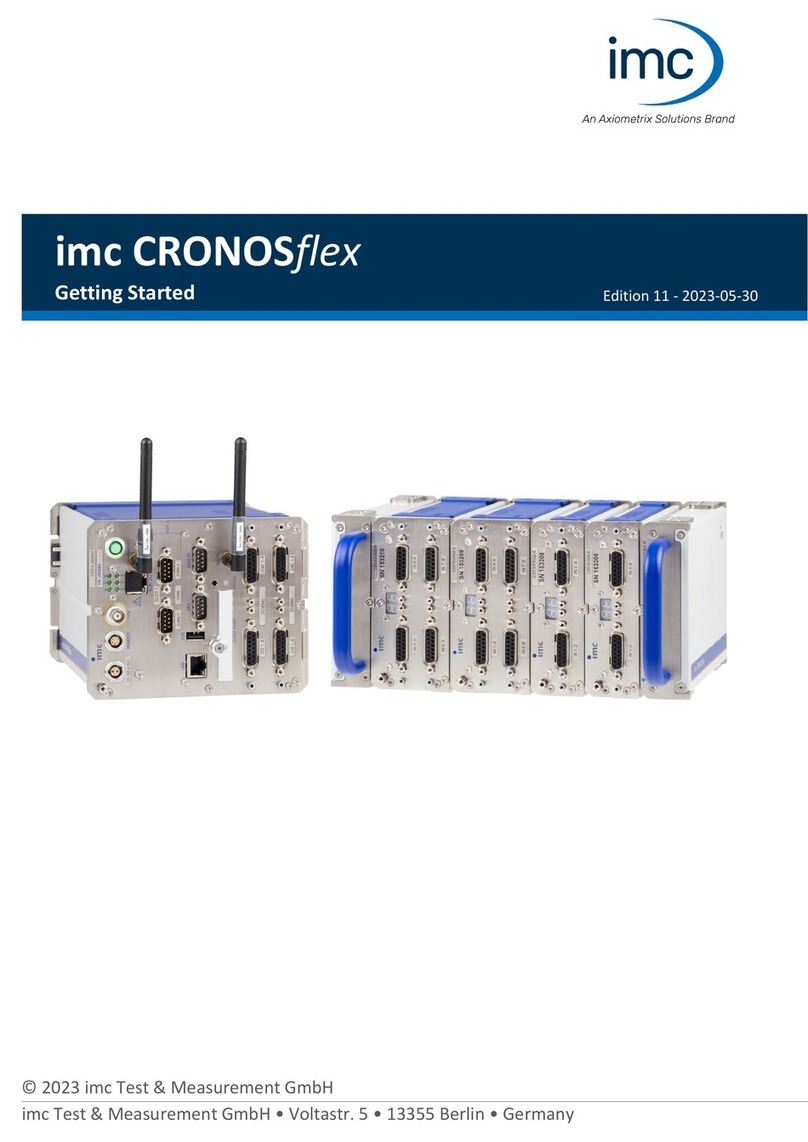
© 2022 imc Test & Measurement GmbH imc CRONOS-SL/compact - Getting Started, Edition 8 - 2022-07-08
Page 3
Table of Contents
Table of Contents
1 General ...................................................................................................................... 5
1.1 imc Customer Support / Hotline .................................................................................................... 5
1.2 Notes / Quality Management ........................................................................................................ 5
1.3 Liability limitations ......................................................................................................................... 7
1.4 Guarantee ....................................................................................................................................... 8
1.5 Before starting ................................................................................................................................ 8
1.6 Notes on maintenance and servicing ............................................................................................. 9
1.7 Safety .............................................................................................................................................. 9
1.7.1 Responsibility of the user ................................................................................................................................... 9
1.7.2 Operating personnel ......................................................................................................................................... 10
1.7.3 Special dangers ................................................................................................................................................. 10
1.8 After unpacking... ......................................................................................................................... 10
1.9 Transport ...................................................................................................................................... 11
1.10 Storage ....................................................................................................................................... 11
1.11 Cleaning ...................................................................................................................................... 11
2 Start of operation CRC, CRSL .................................................................................... 12
2.1 Precautions for operation ............................................................................................................ 12
2.2 Modularity .................................................................................................................................... 13
2.3 Power supply ................................................................................................................................ 14
2.4 Grounding, shielding of the devices ............................................................................................. 14
2.4.1 Grounding with the use of the included power adaptor .................................................................................. 15
2.4.2 Grounding with power supplied by a car battery ............................................................................................. 15
2.4.3 Shielding ........................................................................................................................................................... 16
2.5 Main switch .................................................................................................................................. 16
2.6 Remote control ............................................................................................................................. 17
2.7 Potential difference with synchronized devices .......................................................................... 18
2.8 Fuses (polarity-inversion protection) ........................................................................................... 18
2.9 UPS ................................................................................................................................................ 19
2.9.1 Rechargeable accumulators and batteries ....................................................................................................... 19
2.10 Removable storage ..................................................................................................................... 22
3 Signal connection .................................................................................................... 23
4 Start of operation Software / Firmware ................................................................... 24
4.1 Installation - Software .................................................................................................................. 24
4.1.1 System requirements ........................................................................................................................................ 24
4.2 Connect the device ....................................................................................................................... 24
4.3 Connecting via LAN in three steps ............................................................................................... 25
4.4 Firmware update .......................................................................................................................... 28
5 Pin configuration ..................................................................................................... 31
5.1 Connecting DSUB-15 adaptor plug .............................................................................................. 31
5.1.1 Device models overview ................................................................................................................................... 32
5.2 DSUB-15 pin configuration ........................................................................................................... 33
5.2.1 Universal plug ................................................................................................................................................... 33
5.2.2 Standard plug ................................................................................................................................................... 33
5.2.3 Special plug ....................................................................................................................................................... 34
